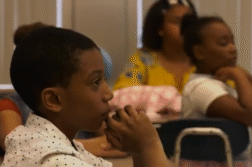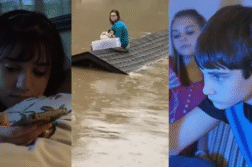DAVIDSON, N.C. (Ivanhoe Newswire) — New research suggests that engaging preschoolers in routine activities, like a trip to the grocery store, can improve a child’s academic achievement when they enter first grade. How can parents use errand time to help their child improve literacy and math?
When you take a shopping trip with your preschooler or toddler, think about the learning opportunities in every aisle. Diana Leyva, PhD, a developmental psychologist at Davidson College studied 200 Latino, Black, and Asian moms and their kids in a lab stocked with play food. Researchers wanted to know what kind of interactions between parent and child best helped the child learn. Researchers asked moms to help their child make a pretend grocery list. Then watched to see how the moms assisted the child with forming letters and sounding out words and if mom took over the task.
“Parents who allowed their child to make the list and to read the list rather than taking over and making the list for the child or reading for the child, have children who one year later have better reading skills,” Leyva told Ivanhoe.
Leyva suggests parents assist with letters and sounds and allow children to draw pictures of the items if they can’t spell the words. Use coins to talk about numbers. Help kids total up the tab.
“We try to introduce numbers, colors, words, anything,” detailed mother Alejandra Sandobol.
The researchers say when they assessed the children in kindergarten and then again in first grade, those who had parents who did not try to direct the shopping activity had the greatest growth in both math and reading. They say that the way parents interacted with kids had the biggest impact, not the grocery shopping itself.
Contributors to this news report include: Cyndy McGrath, Supervising and Field Producer; Roque Correa, Editor and Videographer.
Produced by Child Trends News Service in partnership with Ivanhoe Broadcast News and funded by a grant from the National Science Foundation.



